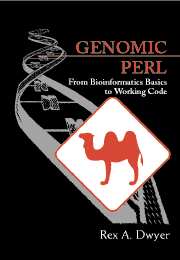Crossref Citations
This Book has been
cited by the following publications. This list is generated based on data provided by Crossref.
Cohen, Jacques
2004.
Bioinformatics—an introduction for computer scientists.
ACM Computing Surveys,
Vol. 36,
Issue. 2,
p.
122.
Randall, Thomas A.
Dwyer, Rex A.
Huitema, Edgar
Beyer, Katinka
Cvitanich, Cristina
Kelkar, Hemant
Ah Fong, Audrey M. V.
Gates, Krista
Roberts, Samuel
Yatzkan, Einat
Gaffney, Thomas
Law, Marcus
Testa, Antonino
Torto-Alalibo, Trudy
Zhang, Meng
Zheng, Li
Mueller, Elisabeth
Windass, John
Binder, Andres
Birch, Paul R. J.
Gisi, Ulrich
Govers, Francine
Gow, Neil A.
Mauch, Felix
van West, Pieter
Waugh, Mark E.
Yu, Jun
Boller, Thomas
Kamoun, Sophien
Lam, Stephen T.
and
Judelson, Howard S.
2005.
Large-Scale Gene Discovery in the Oomycete Phytophthora infestans Reveals Likely Components of Phytopathogenicity Shared with True Fungi.
Molecular Plant-Microbe Interactions®,
Vol. 18,
Issue. 3,
p.
229.
Dudley, Joel T.
Butte, Atul J.
and
Lewitter, Fran
2009.
A Quick Guide for Developing Effective Bioinformatics Programming Skills.
PLoS Computational Biology,
Vol. 5,
Issue. 12,
p.
e1000589.
Piotrowska, Monika
2009.
What Does It Mean to Be 75% Pumpkin? The Units of Comparative Genomics.
Philosophy of Science,
Vol. 76,
Issue. 5,
p.
838.





